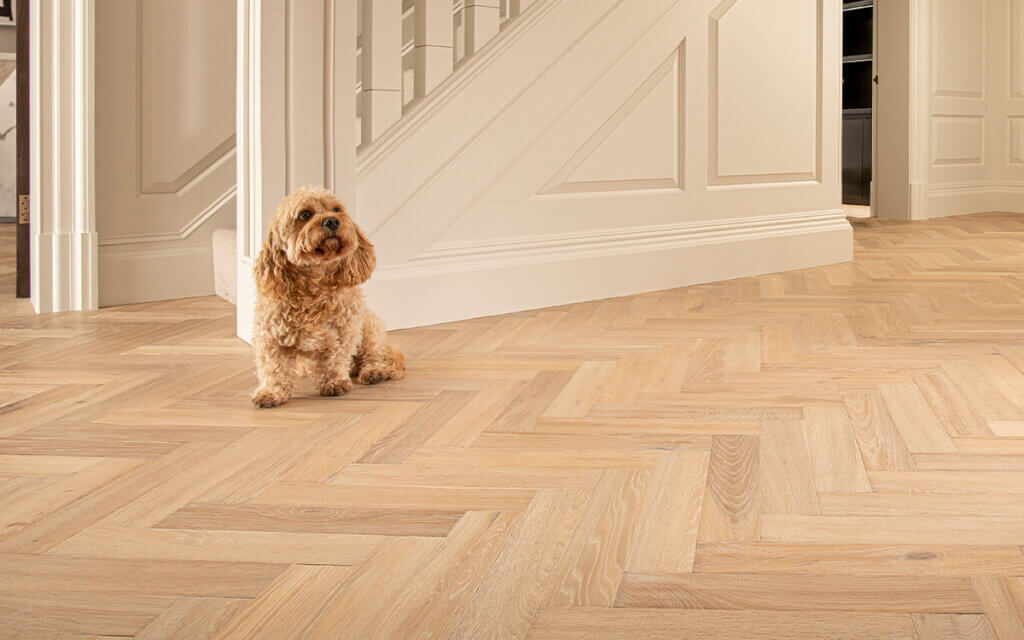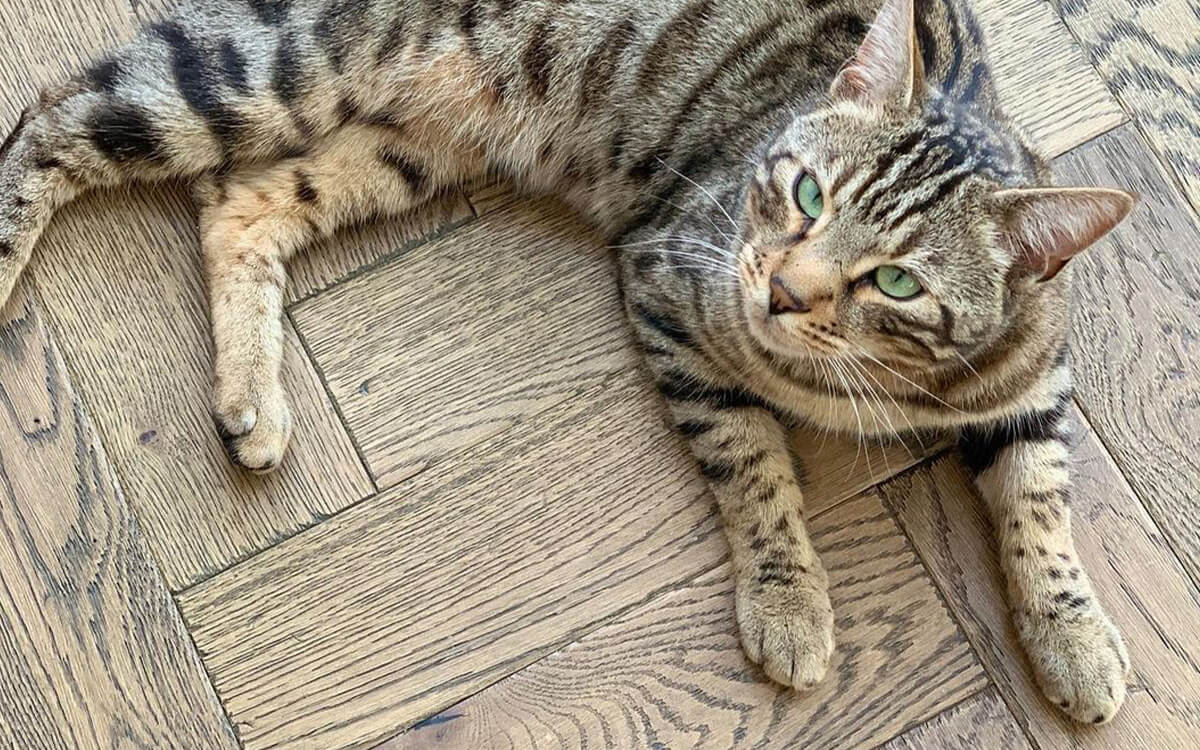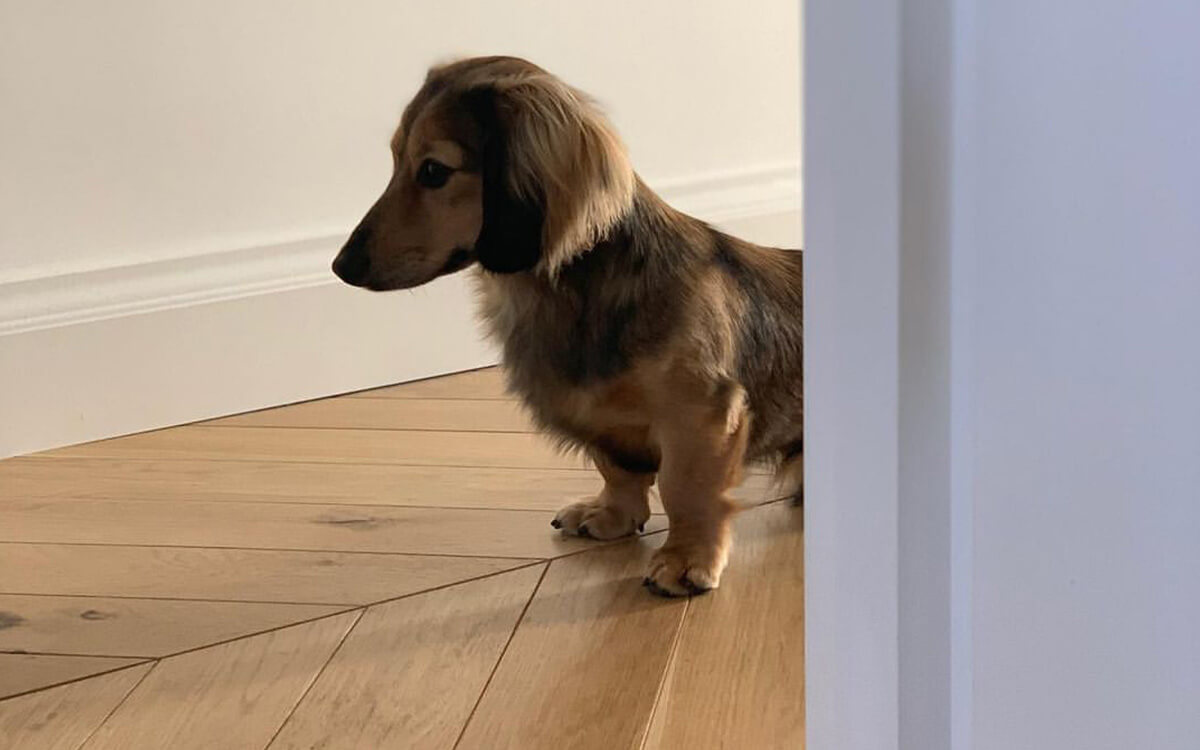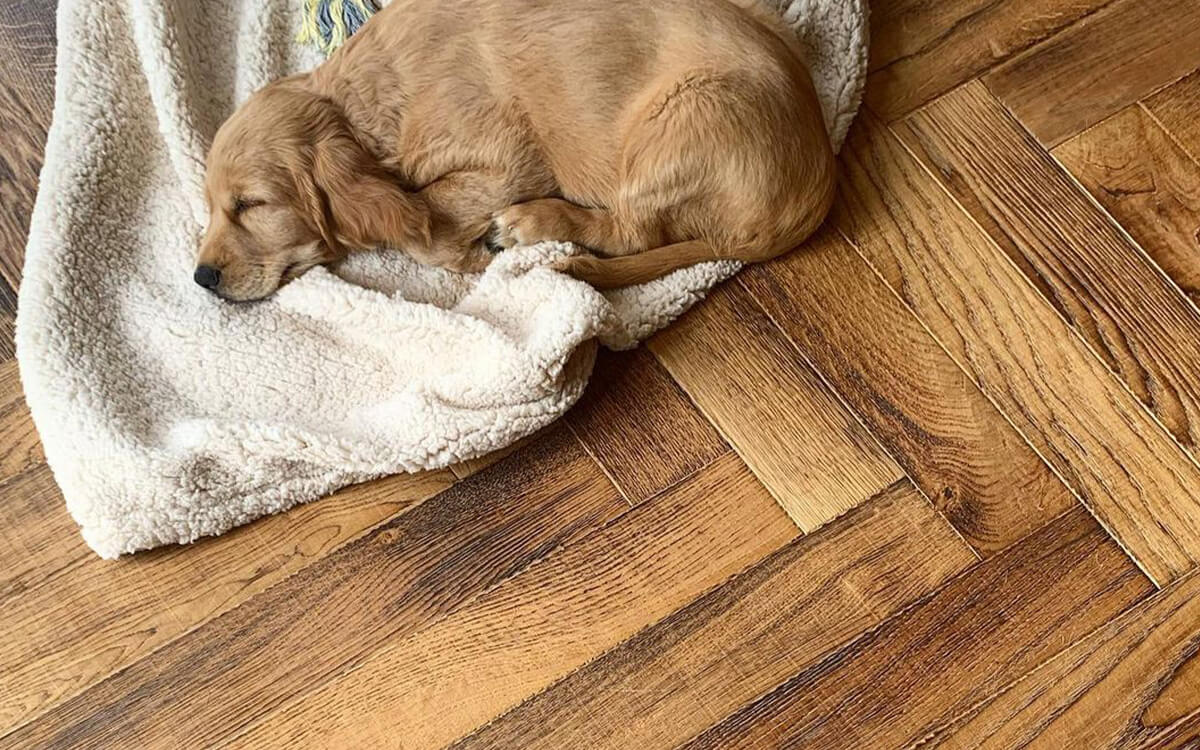There’s no better feeling than seeing your stunning brand-new wood floor in your home. Like any prize possession, you’ll want to maintain the pristine, untouched look for years to come, often inciting extra precautions to avoid damage.
The good news is that avoiding pet-related floor damage isn’t as complicated as it may seem. There are simple steps that you can take to keep your floor looking immaculate for years to come. Read on for our top tips on how to protect your wood floor from pets so you can rest easy knowing your floor will remain blemish-free from your furry friends.

Choose a durable wood flooring option
For those of you who are pre-empting the potential challenges of maintaining wood flooring with pets in the house, your floor choice can make a world of difference. Engineered Wood Flooring is a great flooring option for pet owners.
Undoubtedly the best way to keep your wood floor looking its best is to use preventative measures. However, when the time comes, the beauty of an engineered wood floor is the ability to sand it down and apply a new finish. Provided your floor has a minimum of a 3mm wear layer – the top layer of wood nearest the surface, any damage done to the floor from pets can become an opportunity to reinvent your floor’s aesthetic and give it a new lease of life.

Keep your pet’s nails and paws well groomed
Two of the most common causes of wood floor damage are scratches and moisture retention, which can both be inflicted by your pet’s paws. This is especially true on unfinished flooring, as the absence of a protective finish can make the wood more susceptible to absorbing moisture from wet or muddy paws and abrasions from untrimmed nails.
While dependent on your pet’s individual grooming needs, it’s recommended that nails are trimmed once or twice a month to keep scratching at a minimum. To minimise the amount of water and mud tracked in by your furry companion, always dry and clean their paws before they enter your home and keep paw pads well-groomed so as to not hold moisture which can seep into your flooring.

Carefully clean accidents and spillages
Accidents are a part of life, and an especially common one with young pets who are still being toilet trained. However, even the most durable wood floors won’t be able to withstand large amounts of moisture, making the cleaning process an important aspect of preventing floor damage.
The first task at hand when finding a spillage is to remove as much liquid as possible in a timely manner. To do this, use an absorbent towel, rag or mop to dry the area thoroughly, being mindful to not push the liquid over a greater area. For a full clean, we recommend using a floor cleaner specific to your wood floor and finish, followed by a relevant polish which can help prevent damage from further spillages.
Visit our floor care page for more information on which cleaning and polishing products are right for your floor or explore our floor care accessory range.

Protect abrasion-prone areas
While you may not want to cover your beautiful wood flooring, it can be extremely beneficial to place down padded mats and rugs in areas that are more likely to be tread on by your pet.
Feeding and drinking areas are an ideal place to start due to the likelihood of spillages from dripping water or messy food, as well as by any door or cat flap that your pet may walk through with muddy paws. The same can be said for pet beds where your pet may play with toys that when dropped, can scuff or mark your wood flooring.
If you have any questions regarding protecting your wood floor, you can contact us on our website. Or, if you’re looking for advice on cleaning and reviving your wood flooring, check out our floor care blogs for more information.